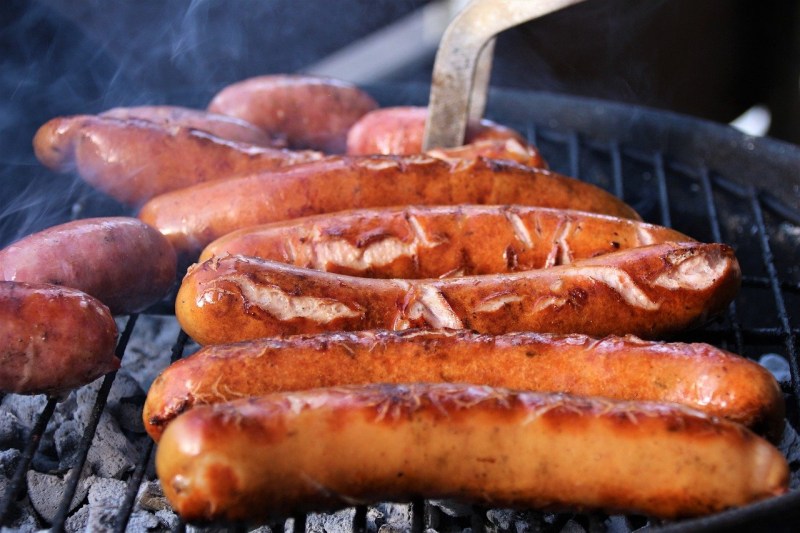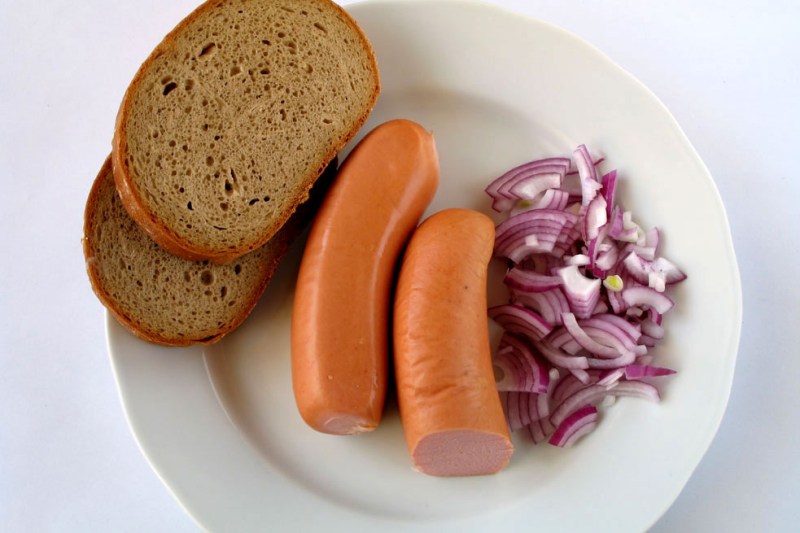With 1,200 different varieties, sausage is serious business in Germany. A great time to experience this German culinary tradition is during Oktoberfest. Centered in the German state of Bavaria, Oktoberfest originally started as a wedding celebration for King Ludwig the 1st in 1810. Since then, Oktoberfest have evolved into a celebration centered on the feeling of gemutlich – defined as “happiness in companionship with others.” Oktoberfest is a celebration with food as the highlight. German dishes like schweinshaxe (crispy pork shank) and steckerlfisch (whole grilled fish) are popular during Oktoberfest, all washed down with plenty of beer. However, Oktoberfest sausages, a pride of German cuisine, also plays a major role in the food.
Intimidated by the variety of German sausages? Looking for expert guidance? Schaller & Weber in Manhattan is here to help. A specialty German butcher shop in the Upper East Side, Schaller & Weber has nearly one hundred years of history and an expert on Oktoberfest sausages.
Related Guides
The Sausages
Traditionally, sausages were created as a way to use leftover meat trimmings. The goal was to minimize waste and utilize as much of the animal as possible. In Germany, sausages can be made from a variety of animals and cuts, although pork is the most common sausage meat. According to Jesse Denes, Vice President at Schaller & Weber, their preferred cut is pork shoulder and jowl due to its balance of moisture and flavor.
The following list includes just a few of the most popular German sausages for Oktoberfest. This is just an introduction — the variety is endless.
Bratwurst

Perhaps the best known of German sausages, bratwursts can be made with veal, beef, or pork (generally pork) and is either fresh or smoked. The texture of this sausage is coarse and juicy. With over 40 varieties, bratwurst recipes can also differ by region.
The best way to enjoy bratwurst is to cook it in a hot pan or grill. This method of direct heat gives the bratwurst a charred and satisfying snap. To serve, enjoy this sausage with a pretzel or alongside potatoes and cabbage. Bratwursts can also be wedged in a roll and eaten as a sandwich.
Knackwurst

These short, fat, and smoky sausages are made with a combination of veal and pork. Besides being very garlicky, knackwursts are also known for their intense snap. The name of the sausage comes from the German word “knacken” (to crack). One bite into a knackwurst and one will treated to the loud snap of its natural casing.
Knackwursts can be grilled or heated in boiling water until ready. Be sure to eat this sausage with plenty of sauerkraut and mustard.
Frankfurter Würstchen

Originating in Frankfurt, Germany, the frankfurter is better known in America as the humble hot dog. This long, smoothly textured sausage is blessed with a light smoky flavor. The German frankfurter is usually made with pork (whereas most American hot dogs are made from beef). Generally, German frankfurters have natural casings, giving the sausage a great snap.
Since frankfurters are smoked and cooked, they don’t need much cooking time. Crisp them up in a pan or grill and serve in bun with plenty of mustard and horseradish for a taste of the original frankfurter.
Weisswurst (Bockwurst)

This white-colored sausage is perhaps the king of Oktoberfest sausages. “Oktoberfest is very specifically Bavarian, and while other parts of Germany do celebrate it, they tend to stick to the weisswurst,” said Denes. These white-colored sausages are smooth and mild-flavored, made with a combination of veal and pork back bacon. Weisswurst owes its flavoring to a combination of leeks, chives and green onions. In Germany, weisswursts are eaten before noon, even producing a saying that “weisswursts should not be allowed to hear the noon chime of the church bells.”
The proper way to cook weisswursts is to heat them in simmering hot water. Do not overcook the weisswurt to the point where the sausage skin splits. According to Denes, weisswurst is also commonly served in a bowl of warm water and the skin is also sometimes removed before eating. Weisswursts are delicious with a pretzel and sweet Bavarian mustard.
Sausage Condiments
The classic condiments to eat with German sausages are mustard and sauerkraut. The tart flavors of both condiments helps cut the richness of the meat and fat. For the best mustard, try to source German mustards whenever possible. If German mustards aren’t available, a spicy brown mustard will do the trick.
Regarding side dishes, there are a lot of traditional options. Most German sausages go well with bread and pretzels. But if the sausages are being served as an entrée, try accompanying the sausages with potatoes or delicious red cabbage.
Where to Buy German Sausages
Although many supermarkets will sell German sausages, try visiting your local butcher shop for the best products. Specialty butchers will either make their own sausages or source the highest quality products in the area. Another great option is to order it online.
The good news is that Schaller & Weber delivers their German products around the country. For a taste of Oktoberfest, order their Oktoberfest Pack for $52 (available year round for delivery). This gift pack includes cooked bratwurst, knackwurst, Nuernberger bratswurst, weisswurst brockwurst, Dusseldorf-style horseradish mustard, sweet & spicy Bavarian style mustard, and sauerkraut. This pack is a guaranteed hit for anyone looking to reproduce a taste of Oktoberfest at home.



